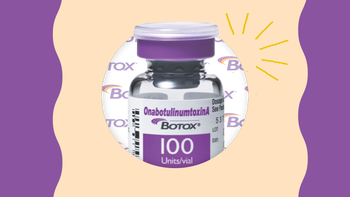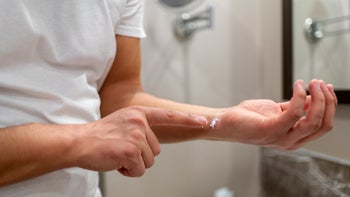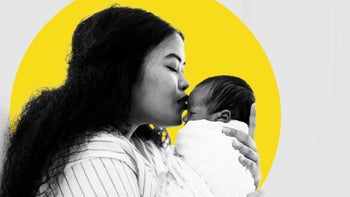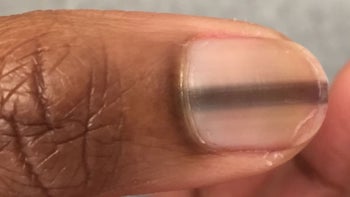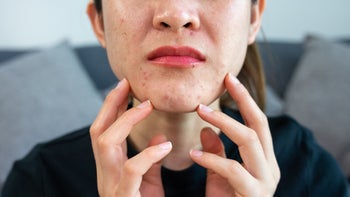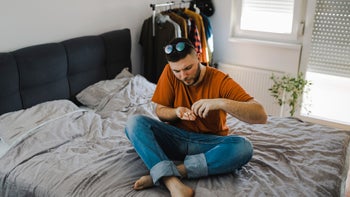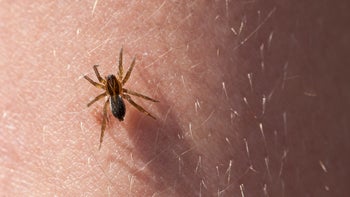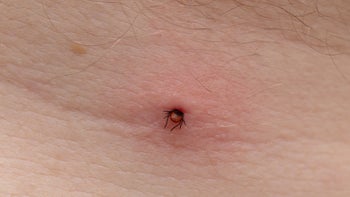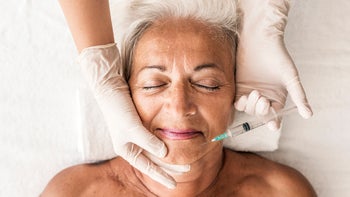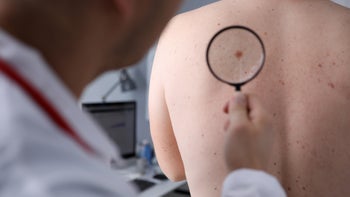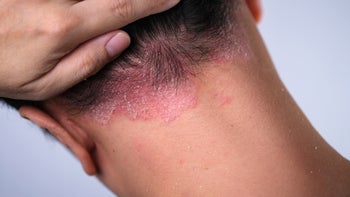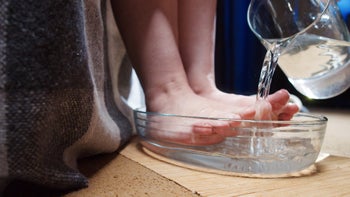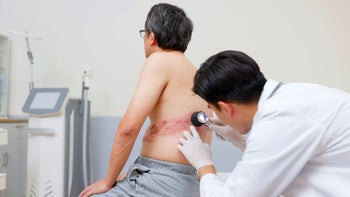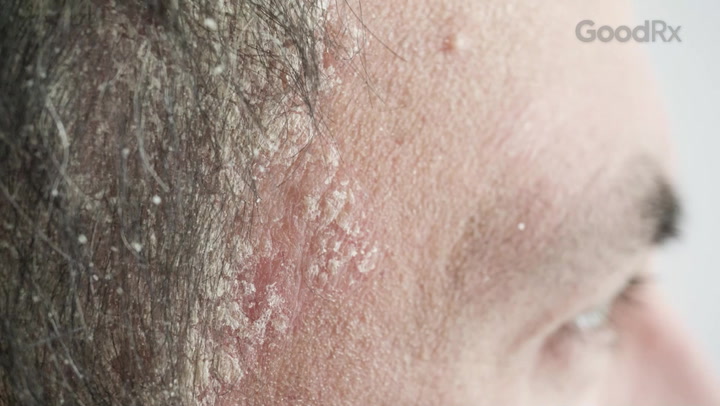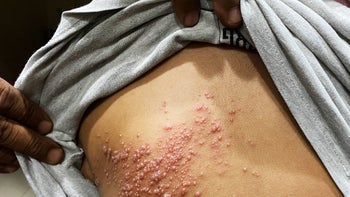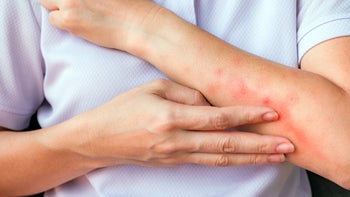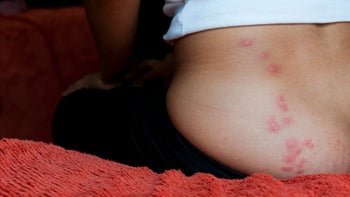
What Is Erythema Nodosum?
Key takeaways:
Erythema nodosum (EN) is a lumpy, tender rash. It typically affects the front of your shins, but can occur in other areas of your body.
In most cases, an exact cause for EN is never found. But it may also be related to a more serious underlying condition.
EN often heals on its own without any treatment, but medications like non-steroidal anti-inflammatory drugs (NSAIDs) and steroids can help relieve your symptoms.
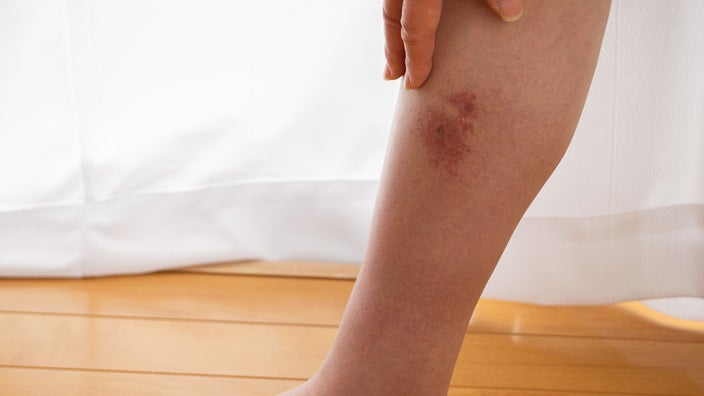
Erythema nodosum (EN) is a rash that causes tender, reddish-purple lumps, especially on the shins. EN can happen to anybody, but it’s most common in women in their 20s to 40s. Often, no specific cause of EN is ever found, and it typically heals on its own. But sometimes, EN can be related to an underlying health condition.
In this article, we’ll discuss the causes, symptoms, diagnosis, and treatment of EN.
What causes erythema nodosum?
Scientists are not 100% sure what causes EN. But we do know that it is an immune system reaction to some kind of trigger. The immune system is the body’s army. It protects us against things that don’t belong, like infections and cancers. When rallying the troops to defend the body, sometimes the immune system goes a little overboard. Extra, unwanted inflammation can occur. EN is an example of extra, unwanted inflammation in the thin layer of fat underneath the skin.
In many cases, EN is idiopathic, which is another way of saying that it “happens for no clear reason.” More often than not, a specific cause of EN is never identified.
Still, EN has multiple known causes. Examples include:
Infection: When a cause is identified, infection is the most common one. Bacterial (like strep throat and tuberculosis), fungal, and viral infections can all cause EN.
Medications: Common culprits include penicillin, birth control pills, and sulfa drugs.
Pregnancy: Some people may develop EN during pregnancy.
Cancer: Any type of cancer might cause EN, but Hodgkin’s lymphoma, leukemia, and carcinomas are the most common types that cause it.
Autoimmune conditions: Autoimmune conditions, like sarcoidosis and Crohn’s Disease, may also cause EN.
Is erythema nodosum an autoimmune condition?
Not exactly. EN is a rash caused by an immune system overreaction. But it is not a disease in and of itself. Think of it more like an immune symptom.
What are the symptoms of erythema nodosum?
EN causes tender, warm, reddish-purple lumps about one to two inches wide. In people with darker skin tones, the skin might appear darker in the tender spot, or there may be no color change at all. Also, EN lumps do not ulcerate, which means that they do not open up or ooze.
EN lumps are typically located on the front of both shins. Sometimes they can be wider and overlap, creating bigger areas of tenderness. The forearms, legs, and buttocks might also be involved.
EN lumps take a couple days to pop up, and they go away within 2 months. As they heal, the color changes from red-purple to yellow-brown-blue-green (like a bruise). Sometimes, skin darkening can continue for months after EN heals.
Some people may experience additional symptoms 1 to 3 weeks before the EN rash starts. These symptoms might include:
Fever
Fatigue
Joint pain
How is erythema nodosum diagnosed?
Healthcare providers can often diagnose EN just by looking at it — especially when it shows up on your shins. If EN is located in an unusual area, a skin biopsy might be necessary. This involves removing a small piece of skin and looking at it under the microscope.
What should be done to look for a cause of erythema nodosum?
Usually, no specific cause for EN is found. But since EN can be associated with more serious conditions, your provider will ask you questions and order additional tests to check for them if needed.
When thinking about causes of EN, your provider will ask about:
Recent medication use: Remember to tell your provider about over-the-counter medications and herbal supplements, too.
Recent travel and activities: Travel to certain places or certain outdoor activities might raise the risk of some infections.
Any other symptoms: If you’ve noticed anything out of the ordinary in the last few weeks, mention it to your provider. These symptoms could be clues that help you and your provider find out the cause of your condition.
After a thorough conversation, your provider will examine you carefully. Based on your response, additional tests might be ordered, too. Examples include:
Blood tests
Stool tests, if stomach symptoms like diarrhea or abdominal pain are present
Pregnancy tests, if there is a chance you might be pregnant
Throat swabs to check for strep throat, especially if you have symptoms of strep
Chest X-rays, which can check for sarcoidosis, tuberculosis, or other lung infections
What are the options for erythema nodosum treatment?
EN commonly goes away on its own after a few weeks, so treatment is often not needed. To relieve your symptoms while your EN heals, consider the following:
Resting
Propping up your legs
Gentle compression with bandage wraps or compression socks
Medications may speed up the healing process and lessen symptoms. If treatment is needed, first-choice medications are non-steroidal anti-inflammatory drugs (NSAIDs), like ibuprofen and naproxen. These medications are available over the counter or with a prescription.
However, NSAIDs are not a good option for people with kidney disease, stomach ulcers, or heart disease. They are also not recommended after 20 weeks of pregnancy.
If NSAIDs are not an option or your symptoms are very severe, discuss with your provider if stronger anti-inflammatory medications called “steroids” — like prednisone — can help treat your symptoms.
EN skin changes rarely become chronic or recur. In these cases, other medications can spare your body from repeated use of NSAIDs and steroids. Examples include:
Steroid injections
How serious is erythema nodosum?
EN is uncomfortable and a bit of a drag. But fortunately, it’s not life threatening!
The bottom line
EN is a tender, lumpy rash triggered by an immune response to something. In most cases, that “something” is never found, and EN just gets better on its own. Sometimes, EN is a symptom of a more serious condition. Your provider will ask you questions and examine you to determine if more tests are needed. Treatment might be nothing at all or a short course of anti-inflammatory medications.
References
Cancer Treatment Centers of America. (2022). What is carcinoma?
DermNet NZ. (2019). Erythema nodosum.
Mert, A., et al. (2007). Erythema nodosum: An evaluation of 100 cases. Clinical and Experimental Rheumatology.
Pérez-Garza, D. M., et al. (2021). Erythema nodosum: A practical approach and diagnostic algorithm. American Journal of Clinical Dermatology.
Requena, L., et al. (2002). Erythema nodosum. Dermatology Online Journal.
U.S. Food and Drug Administration. (2022). FDA recommends avoiding use of NSAIDs in pregnancy at 20 weeks or later because they can result in low amniotic fluid.
Yale Medicine. (2017). Skin biopsies: What you should expect.



